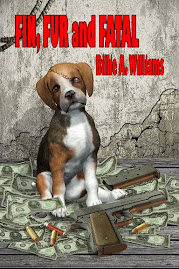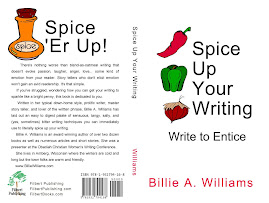While I was preparing my non-fiction trial guide, SEE YOU IN COURT! for publication, it came to me that it was a good reference work for writing fictitious court scenes. It is full of nuances and quirks that could lend credence to a narrative. And that got me to wondering what, if anything, lawyers and authors have in common. Go to the mystery and thriller section of a bookstore (if you can find one of those) and you will see that a lot of authors are actually lawyers who write novels. I came to the conclusion that there must be something they have in common. But what?
Of course, they both need to know how to write. But what you write about and the forms that you use to convey your message are completely different. To begin with, lawyers tend to want to tell. And they use funny words you could never get by with in a novel; words like “notwithstanding” and “submit” (not the kinky kind) “quash” and “subsequent.” Authors like to show and be omniscient. Sometimes they don’t even write sentences, or whole ones. You’d never get away with that in a legal brief. So, “no” authors and lawyers don’t really have writing in common.
Unless they’re extraordinarily successful, authors don’t dine where lawyers do. They don’t go business class. And they don’t usually dress in suits. Authors often need day jobs. Authors sometimes need lawyers. Lawyers rarely need authors. Lawyers practice civil or criminal law. Authors are civil or uncivil. Lawyers need a license to practice. Authors have license.
So what accounts for the plethora of lawyer/authors? What accounts for, John Grisham, Erle Stanley Gardner, Scott Turow, Lia Matera, John Mortimer, Richard North Patterson, Henry Fielding, Marissa Piesman and Studs Turkel? I think I have an answer: observation. Authors and lawyers are in the business of paying close attention to human behavior, body language and the physical surroundings in which events occur--- good ones, at least.
Now you are saying, “Wait a minute, other occupations rely on observation too. What about cops and doctors, for example?” The difference though between those other occupations and lawyers is that the observations are generally used within the profession. More often than not, doctors report to other doctors and cops work with cops. They both tend to use lawyers when they want to translate their observations into language for public consumption.
Trial lawyers, especially, are trained to closely observe jurors' responses to their questioning during a selection process called voir dire. We scrutinize documents for evidence of forgery or late creation. We examine forensic evidence. We size up witnesses in pre-trial depositions. And our task is to communicate those observations to jurors, a judge or the public in general. Authors who have that skill can ascribe to their characters behavior from nuances and quirks to more definitive conduct. Authors can make their characters sweat, blush, pull their arms across their chests or stare. These kinds of descriptions can show the reader a characters’ personality. Readers will come to empathize or despise, based on the behavior described. Readers can pick up on these descriptions to draw their judgments, rather than having the author tell us how the character feels. Likewise the physical environment can be shown, rather than told about. The gun can still be hot to the touch but the show would be inability to hold onto it, and then perhaps licking some burnt fingers. A stiff wind can whip clothing into knots or cause a wayward piece of trash to wrap around a leg. If I were to write: “As he walked, sheets of newsprint swirled about the sidewalk and the front page of the morning rag decided to wrap tightly around his leg,” the reader might guess that it was wind that caused it.
The law might call the dropping of the gun or the paper-wrapped leg “circumstantial evidence” that the gun was hot and the walk was windy. In See You In Court!, I explain that legally, circumstantial evidence is as good as a percipient narration, but in fiction, circumstantial evidence is better. It is those kinds of details that make the best narrative. Attention to detail, through relating these small clues makes the story. So just as a lawyer is shown evidence, the author can show the reader the evidence, whether it be a weapon, a room, or a document, paying attention to clues, which constitute the circumstantial evidence that makes for the best reading. The best of the lawyer/authors possess this ability to process the evidence and then to communicate it in plain, simple, easy-to-read language.
=================================
Guest Post by Barry S Willdorf, Attorney At Law
I was born in NYC and grew up in MA, where I was one of the earliest surfers on the North Shore. I graduated from Colby College in 1966 and earned a J.D. from Columbia Law School in 1969. I also attended the University of Manchester in England in the mid-sixties. In 1970, I founded the Southern California Military Law Project,dedicated to defending U.S. service personal. In 2001, I published Bring the War Home! fictionalizing my experiences representing anti-war Marines. I enjoys the highest attorney rating given by Martindale and Hubbell (AV.) During a legal career spanning four decades, I have been principal trial counsel in more than 100 jury and court trials. I draws on these experiences in crafting both my guide to courtrooms for laymen and my fiction. My historical novel, The Flight of the Sorceress, (Wild Child Publishing, 2010) recently won a Global E-Book Award for best historical literature and is currently a finalist for a 2012 EPIC Historical Fiction award. Burning Questions, the first part of my “1970s Trilogy was published in August 2011 by Whiskey Creek Press. Part 2, A Shot in the Arm will be published on April 1, 2012
http://cunct.blogspot.com/2012/02/what-do-lawyers-and-authors-have-in.html
http://agauchepress.com/
Wednesday's Words for December 4, 2019
6 years ago












No comments:
Post a Comment